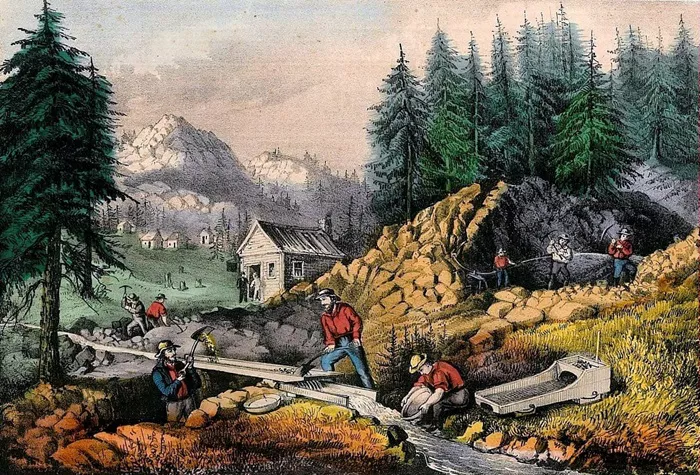January 24 has been a significant date in American history, marked by various events that have shaped the nation’s trajectory. This article delves into notable occurrences on this day, providing a detailed exploration of their historical context and impact.
What Happened on January 24 in American History?
The California Gold Rush Begins (1848)
One of the most pivotal events in American history occurred on January 24, 1848, when James W. Marshall discovered gold at Sutter’s Mill in Coloma, California. This discovery marked the beginning of the California Gold Rush, a monumental migration of people seeking fortune and prosperity.Background of the Discovery
Marshall was working on a sawmill for John Sutter when he stumbled upon gold flakes in the American River. Initially, Sutter and Marshall tried to keep the discovery a secret to prevent a rush of prospectors that would disrupt their operations. However, news leaked out, and by mid-1849, an estimated 300,000 people had flocked to California in search of gold, earning them the nickname “Forty-Niners” due to the year 1849 being the peak of the rush.Impact on Society and Economy
The Gold Rush significantly transformed California’s economy and society. It led to a rapid population increase, with diverse groups including miners, merchants, and settlers arriving from all over the United States and abroad. Towns sprang up overnight, and existing settlements expanded rapidly. The demand for goods and services surged, leading to economic growth but also social strife as lawlessness became prevalent in mining camps.Long-Term Consequences
The Gold Rush played a crucial role in California’s admission to the Union as the 31st state in 1850. It also accelerated westward expansion and contributed to the development of infrastructure such as roads and railroads. Furthermore, it had lasting effects on Native American populations who faced displacement and violence due to the influx of settlers.
The Execution of Ted Bundy (1989)
On January 24, 1989, notorious serial killer Ted Bundy was executed in Florida’s electric chair. Bundy was responsible for the deaths of at least 30 young women during the 1970s, although many believe the actual number could be much higher.Background on Bundy’s Crimes
Bundy’s charm and intelligence allowed him to lure victims easily. He would often feign injury or impersonate authority figures to gain their trust. His crimes spanned several states, including Washington, Oregon, Utah, and Colorado.Trial and Conviction
Bundy’s trial garnered massive media attention due to his charismatic personality and the gruesome nature of his crimes. He was convicted in 1976 for kidnapping and murder. Despite multiple death sentences and numerous appeals over the years, Bundy maintained his innocence until shortly before his execution.Cultural Impact
Bundy’s execution marked a significant moment in American criminal history. It sparked debates about capital punishment and its moral implications. His life story has been the subject of numerous documentaries, films, and books that explore not only his heinous acts but also psychological aspects of his personality.
The Launch of Apple’s Macintosh (1984)
Another significant event on January 24 is the launch of Apple’s Macintosh computer in 1984. This marked a turning point in personal computing due to its user-friendly graphical interface.Innovative Features
The Macintosh was revolutionary as it introduced features such as a mouse-driven graphical user interface (GUI), which made computers accessible to non-technical users. Prior to this, most computers were operated through command-line interfaces that required extensive knowledge.Market Impact
The launch was accompanied by a famous Super Bowl commercial directed by Ridley Scott that positioned Apple as an innovative alternative to IBM’s dominance in computing. Although initial sales were slow, the Macintosh eventually gained popularity and laid the groundwork for future developments in personal computing.
Conclusion
January 24 has witnessed numerous events that have played pivotal roles in shaping American history—from economic transformations during the Gold Rush to significant cultural shifts brought about by technological advancements like the Macintosh launch. Each event reflects broader trends within society and serves as a reminder of how historical moments can influence future generations.This exploration highlights just a few key events from this date; however, each occurrence contributes uniquely to America’s complex historical narrative.
Related Topics:

